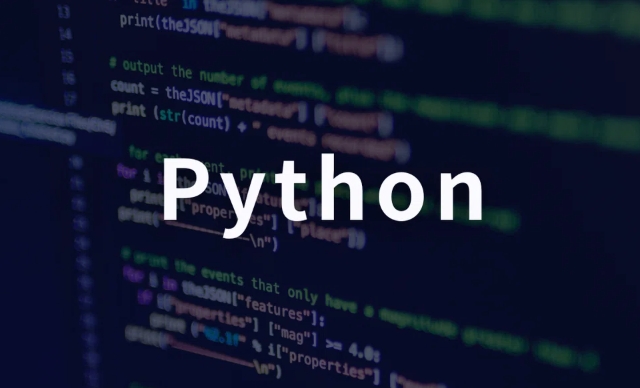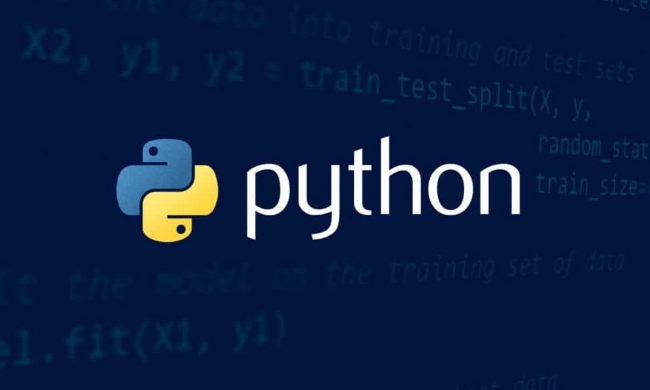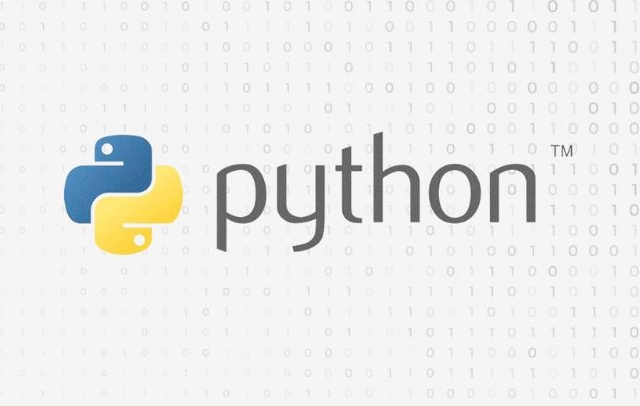In Python, iterators are objects that allow looping through collections by implementing __iter__() and __next__(). 1) Iterators work via the iterator protocol, using __iter__() to return the iterator and __next__() to retrieve the next item until StopIteration is raised. 2) An iterable (like a list or dict) provides an iterator via __iter__(), while the iterator manages iteration state. 3) Custom iterators can be built in classes, useful for memory-efficient or infinite sequences like generating even numbers without storing them all. 4) Common pitfalls include exhausted iterators not resetting and improper reuse across loops or functions like sum().

Python iterators are objects that let you loop through collections like lists, tuples, or dictionaries one item at a time. They’re the behind-the-scenes mechanism that makes loops like for work in Python.

How do iterators work in Python?
At the core of Python’s iteration system is the iterator protocol, which requires two methods:
-
__iter__()– returns the iterator object itself -
__next__()– returns the next value from the collection
When you use a for loop on a list or dictionary, Python automatically creates an iterator and calls next() until there are no items left. When there are no more items, __next__() raises a StopIteration exception to signal the end of iteration.

For example:
my_list = [1, 2, 3] it = iter(my_list) print(next(it)) # prints 1 print(next(it)) # prints 2
You can also build your own custom iterator by defining a class with these two methods.

What’s the difference between iterable and iterator?
This is a common point of confusion for beginners.
- An iterable is any object that can return an iterator. Examples include lists, strings, dictionaries, and files.
- An iterator is the object that actually does the iterating — it keeps track of the current state and returns the next item.
So when you call iter(some_list), you get an iterator back. The iterable gives you access to the data, while the iterator handles how you go through it.
Here’s a quick way to remember:
- Iterable: has
__iter__() - Iterator: has both
__iter__()and__next__()
When would you use a custom iterator?
Custom iterators are useful when you want to define your own way of traversing a sequence — maybe you're dealing with infinite sequences, or you want to control memory usage by generating values on the fly.
For instance, imagine you want to generate even numbers without storing them all in memory:
class EvenNumbers:
def __init__(self, limit):
self.limit = limit
self.value = 0
def __iter__(self):
return self
def __next__(self):
if self.value >= self.limit:
raise StopIteration
result = self.value
self.value = 2
return resultThen you can use it like this:
for num in EvenNumbers(10):
print(num)This will print even numbers from 0 to 8.
Common pitfalls when working with iterators
There are a few things to watch out for:
- Once you’ve exhausted an iterator, calling
next()again will raiseStopIteration. - Iterators don’t reset themselves — once done, they stay done.
- If you reuse an iterator in multiple places, you might find nothing left after the first loop.
To avoid issues:
- Don't reuse the same iterator multiple times; create a new one each time.
- Use built-in functions like
list()ortuple()if you need to store results for later use. - Be careful mixing iterators with functions that consume them fully, like
sum()ormax().
That's basically how iterators work in Python — not too flashy, but essential for handling loops efficiently.
The above is the detailed content of What are python iterators?. For more information, please follow other related articles on the PHP Chinese website!

Hot AI Tools

Undress AI Tool
Undress images for free

Undresser.AI Undress
AI-powered app for creating realistic nude photos

AI Clothes Remover
Online AI tool for removing clothes from photos.

Clothoff.io
AI clothes remover

Video Face Swap
Swap faces in any video effortlessly with our completely free AI face swap tool!

Hot Article

Hot Tools

Notepad++7.3.1
Easy-to-use and free code editor

SublimeText3 Chinese version
Chinese version, very easy to use

Zend Studio 13.0.1
Powerful PHP integrated development environment

Dreamweaver CS6
Visual web development tools

SublimeText3 Mac version
God-level code editing software (SublimeText3)

Hot Topics
 Polymorphism in python classes
Jul 05, 2025 am 02:58 AM
Polymorphism in python classes
Jul 05, 2025 am 02:58 AM
Polymorphism is a core concept in Python object-oriented programming, referring to "one interface, multiple implementations", allowing for unified processing of different types of objects. 1. Polymorphism is implemented through method rewriting. Subclasses can redefine parent class methods. For example, the spoke() method of Animal class has different implementations in Dog and Cat subclasses. 2. The practical uses of polymorphism include simplifying the code structure and enhancing scalability, such as calling the draw() method uniformly in the graphical drawing program, or handling the common behavior of different characters in game development. 3. Python implementation polymorphism needs to satisfy: the parent class defines a method, and the child class overrides the method, but does not require inheritance of the same parent class. As long as the object implements the same method, this is called the "duck type". 4. Things to note include the maintenance
 Explain Python generators and iterators.
Jul 05, 2025 am 02:55 AM
Explain Python generators and iterators.
Jul 05, 2025 am 02:55 AM
Iterators are objects that implement __iter__() and __next__() methods. The generator is a simplified version of iterators, which automatically implement these methods through the yield keyword. 1. The iterator returns an element every time he calls next() and throws a StopIteration exception when there are no more elements. 2. The generator uses function definition to generate data on demand, saving memory and supporting infinite sequences. 3. Use iterators when processing existing sets, use a generator when dynamically generating big data or lazy evaluation, such as loading line by line when reading large files. Note: Iterable objects such as lists are not iterators. They need to be recreated after the iterator reaches its end, and the generator can only traverse it once.
 How to iterate over two lists at once Python
Jul 09, 2025 am 01:13 AM
How to iterate over two lists at once Python
Jul 09, 2025 am 01:13 AM
A common method to traverse two lists simultaneously in Python is to use the zip() function, which will pair multiple lists in order and be the shortest; if the list length is inconsistent, you can use itertools.zip_longest() to be the longest and fill in the missing values; combined with enumerate(), you can get the index at the same time. 1.zip() is concise and practical, suitable for paired data iteration; 2.zip_longest() can fill in the default value when dealing with inconsistent lengths; 3.enumerate(zip()) can obtain indexes during traversal, meeting the needs of a variety of complex scenarios.
 Explain Python assertions.
Jul 07, 2025 am 12:14 AM
Explain Python assertions.
Jul 07, 2025 am 12:14 AM
Assert is an assertion tool used in Python for debugging, and throws an AssertionError when the condition is not met. Its syntax is assert condition plus optional error information, which is suitable for internal logic verification such as parameter checking, status confirmation, etc., but cannot be used for security or user input checking, and should be used in conjunction with clear prompt information. It is only available for auxiliary debugging in the development stage rather than substituting exception handling.
 How to make an object a generator in Python?
Jul 07, 2025 am 02:53 AM
How to make an object a generator in Python?
Jul 07, 2025 am 02:53 AM
To make an object a generator, you need to generate values ??on demand by defining a function containing yield, implementing iterable classes that implement \_\_iter\_ and \_next\_ methods, or using generator expressions. 1. Define a function containing yield, return the generator object when called and generate values ??successively; 2. Implement the \_\_iter\_\_ and \_\_next\_\_\_ in a custom class to control iterative logic; 3. Use generator expressions to quickly create a lightweight generator, suitable for simple transformations or filtering. These methods avoid loading all data into memory, thereby improving memory efficiency.
 What are Python type hints?
Jul 07, 2025 am 02:55 AM
What are Python type hints?
Jul 07, 2025 am 02:55 AM
TypehintsinPythonsolvetheproblemofambiguityandpotentialbugsindynamicallytypedcodebyallowingdeveloperstospecifyexpectedtypes.Theyenhancereadability,enableearlybugdetection,andimprovetoolingsupport.Typehintsareaddedusingacolon(:)forvariablesandparamete
 What are python iterators?
Jul 08, 2025 am 02:56 AM
What are python iterators?
Jul 08, 2025 am 02:56 AM
InPython,iteratorsareobjectsthatallowloopingthroughcollectionsbyimplementing__iter__()and__next__().1)Iteratorsworkviatheiteratorprotocol,using__iter__()toreturntheiteratorand__next__()toretrievethenextitemuntilStopIterationisraised.2)Aniterable(like
 How to call Python from C ?
Jul 08, 2025 am 12:40 AM
How to call Python from C ?
Jul 08, 2025 am 12:40 AM
To call Python code in C, you must first initialize the interpreter, and then you can achieve interaction by executing strings, files, or calling specific functions. 1. Initialize the interpreter with Py_Initialize() and close it with Py_Finalize(); 2. Execute string code or PyRun_SimpleFile with PyRun_SimpleFile; 3. Import modules through PyImport_ImportModule, get the function through PyObject_GetAttrString, construct parameters of Py_BuildValue, call the function and process return






